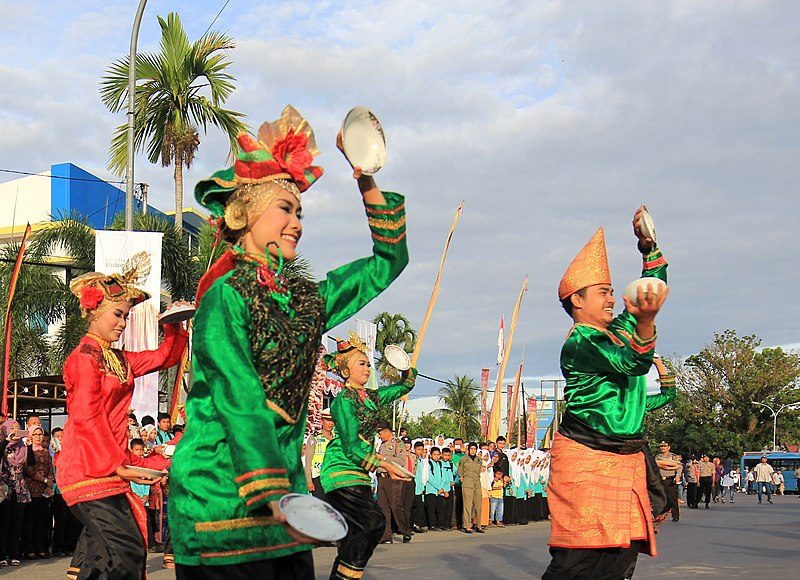Indonesia has a rich culture in every region. Some of these areas have cultural and artistic diversity. One of the areas rich in culture and arts is the Lampung Province. In Lampung, there are traditional arts, one of which is Melinting Dance. What is Melinting Dance?
Melinting Dance is a classical dance from the Melinting Kingdom in Labuhan Meringgai, East Lampung. Melinting dance is classified as the oldest dance there, because it is estimated that this dance has existed since the entry of Islam in the Lampungi area. This dance is usually performed by male dancers and female dancers. Melinting dance is often displayed in various events, both traditional and cultural events held there.
According to its history, the Melinting Dance was created in the 16th century by Ratu Melinting II who had the title Pangeran Panembahan Mas. Initially this dance was only known in the royal environment, and was only performed at traditional gawi events in the Melinting Kingdom. At that time this dance could only be performed by the sons and daughters of Ratu Melinting.
In 1958, this Melinting Dance began to experience development and perfection. The dance, which was originally only performed in this royal environment, later developed into a folk dance. This dance is then often displayed at various major events such as welcoming ceremonies, celebrations, and cultural events held there.
This dance is interpreted as an expression of gratitude and happiness for the people for what they get. Besides that, every movement in this Melinting Dance certainly has its own meaning and philosophy in it.
Melinting dance is usually performed by male dancers and female dancers. For the number of dancers, there are usually 8 dancers consisting of 4 male dancers and 4 female dancers. By wearing traditional clothing and accompanied by accompanying music, the dancer dances with a distinctive movement and uses a fan as an attribute in the dance.
In the Melinting Dance show, it is usually divided into several rounds, including the opening round, the kugawo queen stage, the floating knui round, and the closing round. In this opening round, the dancers pay their respects to the guests.
Then in the kugawo queen stage depicts the gentleness of female dancers and the agility and courage of male dancers. Meanwhile, in the knui round, the dancers represent the majesty and elegance of the dancers. Then the closing round ends with greetings and respect from the dancers.
The movements of male dancers and female dancers in this Melinting Dance are basically different. The movements of male dancers are usually dominated by agile and dynamic movements. These movements include the movement of babar fans, jong sumbah, sukhung, hover palau, kenui nyiduk drift, shakes, suali, rod niti, luncat deer, and lapah swing.
Meanwhile, female dancers are dominated by gentle movements which include babar “fan” movements, jong sumbah, sukhung, sekapan, floating mabel scales, nginyau bias, inviting lado, treading manuk dung, and lapah ayun.
In Melinting Dance performances are usually accompanied by traditional music which consists of bala, gongs, drums and several other additional musical instruments. Traditional music is played along with the dancers’ movements. Each stage in this Melinting Dance is usually accompanied by a different rhythm, because it has to adjust to the movements of the dancers.
The costumes used by dancers in the Melinting Dance show are usually traditional clothes. For costumes, female dancers usually wear a siger with a Subang pandan flower veil, a jukum fruit necklace, a canoe bracelet, a seretei feather, a rui bracelet, a sesapurhanda, a filter, and a jungsarat. As for the costumes of male dancers, they usually wear gold skullcaps, pandanus flower melur, buah jukum, jung sarat, Papan jajar, bulu seretei, sesapur handap, injang tuppal, and celana reluk belanga.
So, are you interested in learning and knowing some traditional dances from Indonesia?






























